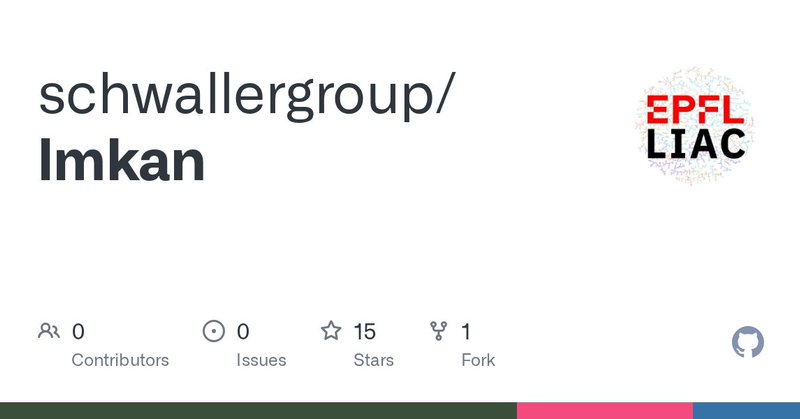
Sergey Pozdnyakov
@spozdn
Followers
358
Following
318
Media
8
Statuses
138
Postdoc @SchwallerGroup @EFFL | Geometric deep learning on 3D point clouds for atomistic modeling
Lausanne
Joined May 2023
Thrilled to share our new work MatInvent, a general and efficient reinforcement learning workflow that optimizes diffusion models for goal-directed crystal generation. Thanks to @JeffGuo__ , @efssh , @pschwllr , @SchwallerGroup , @NCCR_Catalysis . https://t.co/S7ibrRNdxp
arxiv.org
Diffusion models promise to accelerate material design by directly generating novel structures with desired properties, but existing approaches typically require expensive and substantial labeled...
2
9
18
See you there! 🤗
Reading group session on Monday: "Lookup multivariate Kolmogorov-Arnold Networks" https://t.co/W11eNHMlR9 with Sergey Pozdnyakov On zoom at 9am PT / 12pm ET / 6pm CE(S)T: https://t.co/Kew3F4DXag
0
0
4
Our new work, “QCell: Comprehensive Quantum-Mechanical Dataset Spanning Diverse Biomolecular Fragments,” is now out on arXiv! 🌱 1/7
1
1
6
Exciting postdoc opportunity in the @SchwallerGroup at EPFL! We're hiring a postdoc to advance ML-driven synthesis planning after Zlatko Joncev’s successful exit to co-found B-12 (YC '25) 🚀 Work on: - LLMs for strategic synthesis planning - Chemical reasoning at scale -
arxiv.org
While automated chemical tools excel at specific tasks, they have struggled to capture the strategic thinking that characterizes expert chemical reasoning. Here we demonstrate that large language...
0
17
38
You don’t like molecular dynamics? We get it. That’s why at this year’s LLM hackathon for Chemistry and Materials Science, we built not one, but ✨two✨ AI agents for molecular dynamics 👇
1
7
17
Shout-out to my supervisor @pschwllr, and huge thanks to all the members of the LIAC group @SchwallerGroup ♥️♥️♥️
1
0
6
We did it for Convolutional Neural Networks, and it works too. lmKAN-based CNNs are Pareto optimal on both the CIFAR-10 and ImageNet-1k datasets, achieving 1.6-2.1× reduction in inference FLOPs at matched accuracy.
1
0
4
High-dimensional linear mappings are a primary component of most architectures, not just fully connected neural networks. So, other architectures can also be made lmKAN-based.
1
0
4
It works! Our lookup multivariate Kolmogorov-Arnold Networks (lmKANs) are consistently inference FLOPs Pareto optimal. For general function approximation, the inference FLOPs reduction is up to 6.0×. For the methane dataset, the H100 wall-clock time reduction is up to 12.9×.
1
0
3
Furthermore, we introduce a multivariate extension to KANs, which is built upon multivariate functions as building blocks. Our layers can have hundreds of times as many trainable parameters as a linear layer with the same shape. Yet the inference FLOPs are only twice as large.
1
0
4
Kolmogorov-Arnold Networks are natural hosts for this idea as they express general high-dimensional mappings in terms of multiple optimizable 1D functions that can be splined. We implement CUDA kernels for this approach.
1
0
3
Spline lookup tables allow us to do better than that. Let's take an optimizable piecewise linear function defined on a regular grid with G intervals. It contains G + 1 independent trainable parameters. While G can be arbitrarily large, the computational cost to evaluate it at any
2
0
5
The number of trainable parameters is a primary predictor of a model's capabilities. For a linear layer with dimensions N_in and N_out, the number of parameters is ~N_in N_out, and so is the number of multiplications. One trainable parameter = one multiplication at inference.
1
0
3
You can have a fully connected layer with hundreds of times as many parameters as a linear layer of the same shape, but only 2× the inference FLOPs. CUDA kernels included. Paper: https://t.co/qrhuyCUg0n Code: https://t.co/Cn1GcWAJOR
#lmKAN Main idea below.
github.com
Contribute to schwallergroup/lmkan development by creating an account on GitHub.
1
0
4
High-dimensional linear mappings, or linear layers, dominate both the parameter count and inference cost in most deep learning models. We propose a general-purpose drop-in replacement with a substantially better capacity - inference cost ratio. Check it out!🧵
1
10
34
Introducing GRACE foundational machine learning interatomic potentials – a new SOTA Pareto front for accuracy vs. performance, built for efficient MD simulations, versatile fine-tuning & distillation. Learn more: https://t.co/8xC2KKYq1q & https://t.co/S5e7OXZbJx
#MaterialsScience
1
3
17
AI4Mat is back for NeurIPS! time to crystallize those ideas and make a solid-state submission by august 22, 2025 💪 new this year: opt-in your work for our Research Learning from Speaker Feedback program -- a new structured discussion format where spotlight presenters receive
0
20
83
b-12 ( https://t.co/sUMDUAK8TT) is building AI agents that help chemists design experiments and automatically run them on lab robots. They turn months of manual chemistry work into minutes of automated execution. Congrats on the launch @drecmb & @ZJoncev! https://t.co/waQzlnrS7z
20
27
129
🚀Exciting news! We are releasing new UMA-1.1 models (Small and Medium) today and the UMA paper is now on arxiv! UMA represents a step-change in what’s possible with a single machine learning interatomic potential (short overview in the post below). The goal was to make a model
2
27
125











